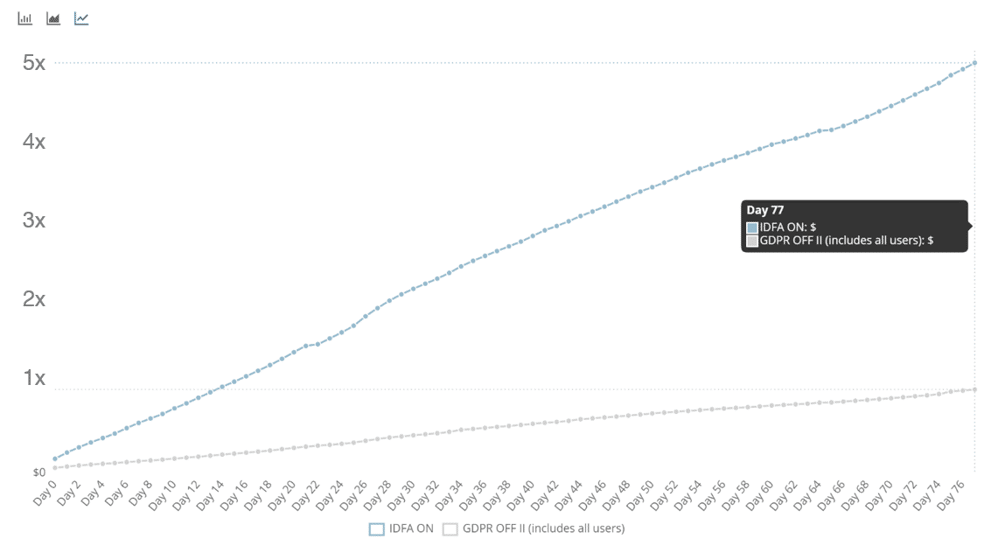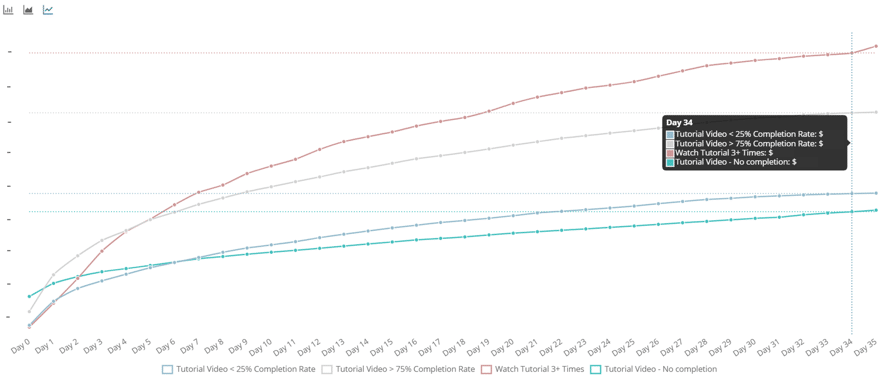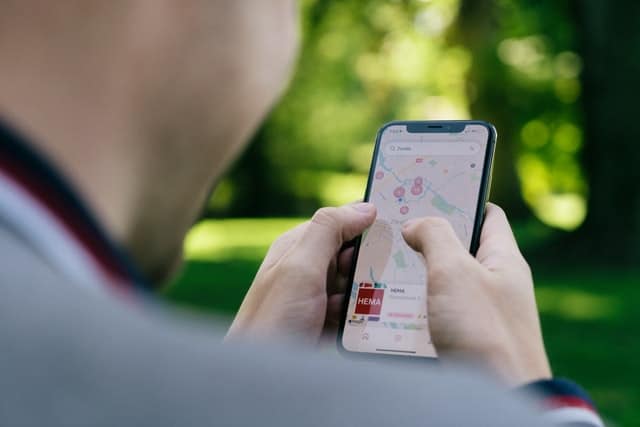Everything App Developers Need to Know About Apple’s IDFA Deprecation: Part 1: This is going to hurt. Here’s how leaders are preparing.
Introduction:
Apple’s announcement of the deprecation of the IDFA has dominated the mobile app ecosystem’s attention since June 2020, and while it is sure to affect the entire ecosystem, the industry is scrambling to plan and react to this massive industry shift.
In speaking and strategizing with dozens of app developers and publishers around the world over the past several months, AdLibertas has assembled some thinking into what the leaders are doing to plan, prepare and adapt.
This three-part series is our assessment of what’s to come for the mobile app industry, which apps are poised to win or likely to struggle, and how app developers can prepare and adapt.
- Part 1: Where will the impacts be felt? How are app developers preparing now, and how will they drive revenue in the near-term?
- Part 2: What types of apps are most exposed to risk – and most poised to thrive?
- Part 3: How will Apple’s privacy changes change mobile apps in the long term?
If you’re a mobile app developer, what does your next year look like? Share your thoughts either in the comments or directly at adam@adlibertas.com.
Part One: This is going to hurt. Here’s how leaders are preparing.
The plain truth is this: Nobody knows exactly what will happen or exactly what to do. Even the best and biggest app devs in the world aren’t sure of much. One thing they are sure of is that it’s going to hurt. iOS developers relying on advertising for monetization or UA will be adversely affected for the medium term.
Specfically:
1. Opt-ins will be sparse and hard to predict.
In virtually all modeling, it’s been clear the majority of users will not opt-in to share their IDFA and allow tracking – the general consensus is between 10-20% of users will do so. Unfortunately, the very act of testing is difficult to apply to the consumer at large; much like the roll-out of opt-in cookies, the consumer’s behavior changes from the first-time seeing the prompt on their favorite site to seeing them everywhere on all sites. Like one app developer shared:
“We did extensive testing and were able to double the opt-ins, but quickly realized user-behavior changed once they started to expect or were seeing multiple requests.”

Photo by Lukas Blazek on Unsplash
2. Profitable UA will be harder to scale and more expensive.
The golden rule for app developers/marketers is to make more on an acquired user than their cost to acquire. Ideally, this is done by tracking individual users via an acquisition campaign and optimizing spend on those campaigns with the best ROI. However, without unique user IDs, ROI is no longer as simple as tracking earned revenue by acquired user. This means advertisers will no longer be able to target as effectively, meaning they will need to buy more users to find the right In some cases, if tracking becomes too convoluted or inaccurate, marketers will be unable to find the same volume of users and will be unable to justify spending.

3. This will lead to serious effect on ad revenue & user LTV
When the advertisers can’t target as effectively, they can’t pay as much per user — which means they’ll pay less per impression served. This means unit revenues (CPMs) will be lower, meaning ad-supported apps will earn less for showing ads in-app.
Due to the uncertainty, however, there isn’t a great method for actually testing or predicting this impact. Right now, we’re recommending our customers plan for a medium-term impact of 30% decreased iOS ad revenues. Some of our customers and contemporaries are preparing for worse. A large app developer recently told me they wouldn’t be surprised at a 50% drop in iOS ad earnings with a “climb” to 30% down in 4 to six months. A performance advertiser told me “For planning purposes I’m budgeting $0 spend on iOS post IDFA.”

PixelTrend: Preparing for IDFA-Impact
To prepare app developer PixelTrend started analyzing its GDPR-protected traffic as a model. “We generate a lot of iOS traffic in GDPR countries and since users already need to opt-in we are analyzing how their IDFA opt-in will affect ad revenues,” said CTO Sebastian Hobarth. The company has to mapped the LTV of users who’ve opted into IDFA-tracking vs the users who’ve limited ad-tracking. “I knew it was important, but I was staggered to find that the IDFA-enabled customer was consistently worth 5X an opt-out user.”
Read the entire case study here.
Some app developers have spent a ton of time preparing – but it could all be wasted effort
Unfortunately the unknowns from the new mandated technologies mean even the heavily invested partners have been shooting for a moving target.
Readying for SKAdnetwork: Unknown strategies lead to changing technologies
As the $80B mobile ad ecosystem scrambles to react to the new privacy polices new strategies are being developed and marketed for tracking and marketing purposes. This means requirements continue to shift and technology is changing on an almost-daily basis. One example, the on-device info.plist was recently mandated to be completely lower-case which for some early adopters means another app update to meet compliance. Over the last six months, SDKs having been getting constantly pushed out as “the latest,” only to be updated weeks later – with each update stealing resources away from more valuable activities.
Are you interested in the latest? We’ve complied the SKAdNetwork requirements here.

Photo by Chris Ried on Unsplash
Preparing for ATT opt-ins
While everyone agrees optimization of the user opt-in text prompt will be important, the difficulty of market-level user behavior predictions and the unknowns behind the buyer’s strategies make any revenue “win” fragile and perhaps temporary. A large mobile game company recently shared with us:
“We’ve made this our biggest focus since August and unfortunately, with all the unknowns on end-user behavior when this deployed, it might have been a complete waste of our time.”
Determining early post-install Events
An early event in a user’s lifetime can help quickly – and cost efficiently—optimize a UA campaign. While this is not a new phenomenon – it is more important than ever since these events can be posted back to the networks to help optimize a campaign quickly.

Others are fed-up and transitioning to in-app purchases.
For many, the IDFA was the nail in the coffin for an ad revenue supported model. It’s clear that for many apps, subscriptions and in-app purchase (IAP) revenue drive a much higher LTV per user than ad revenues – it’s just harder to convert these users. But the powerlessness of IDFA-deprecation has led many developers to finally convert their focus on a different monetization approach.
The good news is fewer users will monetize but are measured more quickly “Subscriptions allow me to measure ROAS much faster and are much more predictable than advertisements. No longer am I at the whim of advertisers or ad budgets.”
-Bryant Harris, CEO WhosHere

Photo by Graeme Worsfold on Unsplash
Everyone is focused on retention:
Build better apps: It’s easier to keep a user than find a new one. Research shows it’s five to 25 times more expensive to find a new customer than retain an existing one and when customer acquisition comes under fire from uncertainty, rising costs and increased competition, it’s no surprise that app developers have started to look inwards at what they have and can control.
At AdLibertas we are seeing app developers start to put focus on retention and engagement. Not only does it present a low-cost method to increase the potential LTV of a customer, it also has the added benefit of making better product: keeping users around means making a better app.

VisualBlasters: Onboarding Tutorials to Help User Retention
VisualBlasters is a company fortunate enough to have a high organic install-rate, but the app– an animation app– has a steep learning curve with high user drop-off “getting users effective requires education and investment from the user. But once they learn the daily active user spend hours in the app. While marketing for new users is important, keeping a higher percentage of the millions of organic users will be easier and more effective.”
Geoff Hladik, Strategic Growth VisualBlasters
Read the entire case study here.
A logical conclusion would be, “App developers should hope for the best but prepare for the worst.”
Clearly, there are a lot of unknowns, and it’s frustrating and scary. Mobile app developers can’t count on opt-ins, the technology is ever-changing and advertisers won’t be able to continue buying at the same rate. There will undoubtedly be blood shed as these changes will hurt the mobile app ecosystem’s economy.
The leaders are preparing to the best of their abilities but clearly the market is a moving target. Before the launch of iOS 14.5, app developers need to enable the proper technologies, and experiment with how to receive their users’ opt-in wherever possible but app developers should also consider diversifying where they can: can you get your users to purchase?
Can you offer a compelling subscription model? And don’t forget, in a world where 70% user drop-off on day 1 is normal, can you increase your user loyalty?
In our next component, we’ll be talking about the business models that are at risk and those best-suited for the coming changes.

